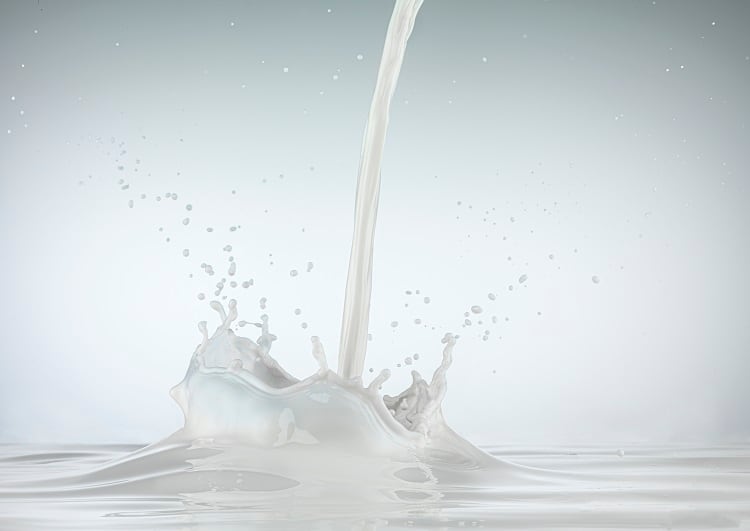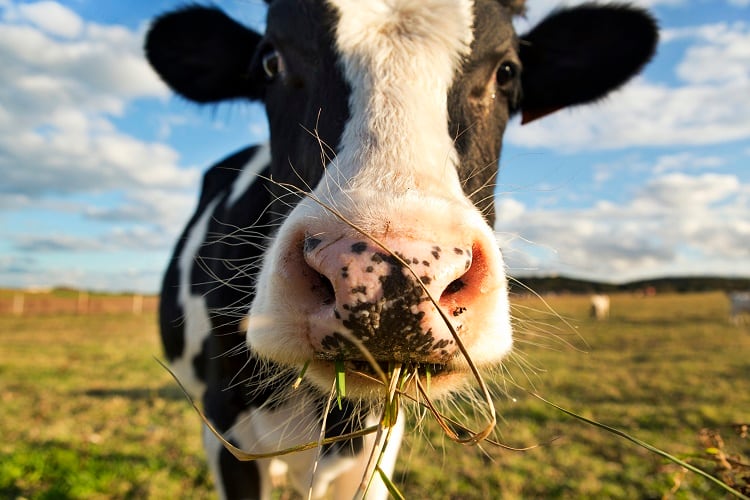Pasteurisation is an important part of the process of making milk safe for consumption, as otherwise, according to the UK’s Food Standards Agency, the risk to human health is significant.
But what if the same job could be done without the heat, making for a less energy-intensive process? Danish company Lyras uses UV light to remove bacteria from milk without heat being needed at all. Initially called ‘cold pasteurisation’, the process has been rechristened ‘raslysation’, a combination of the first three letters in the name of the company’s founder, Rasmus Mortensen, and the Danish word ‘lys’, meaning light.
The process, predicts the company, has the potential to save 60-80% water use and 60-90% energy use compared to pasteurisation. Because it is less energy-intensive than pasteurisation, it is, the company suggested, both more sustainable and cost-saving by comparison.
How the technology works
Raslysation uses ‘germicidal’ UV light to alter the DNA of microorganisms in order to prevent them from reproducing, Mark Kalhøj Andersen, Lyras’ new CEO, told FoodNavigator.
The antibacterial potential of UV light has been known about for a long time, although it was previously used only for transparent liquids like water. Normally, it cannot reach very far into opaque liquids such as milk, only getting 0.1 millimetres through it.
Origins of pasteurisation
Named after the French scientist Louis Pasteur, who in the 1860s realised that abnormal fermentation could be prevented in beer and wine by heating it, the prospect of using pasteurisation in dairy was first suggested by German chemist Frans von Soxhlet in 1886.
However, with Lyras’ technology, the light can reach into the liquid. “That is the innovative element of our technology. We can treat liquids where light naturally cannot penetrate the liquid, it cannot reach the organisms,” Andersen told us.
In order to do this, Lyras puts whichever liquid it is treating inside a polymer coil, through which the light can penetrate. The turbulence created by the movement of the liquid through the coil creates rapid variance on which part of the liquid gets to the inner surface of the coil, meaning, Andersen told us, that all the microorganisms in the liquid will eventually reach the point of light exposure and be altered by the light.
The benefits of no heat
There are a number of differences in the affect of Lyras’ technology, and the effects of traditional methods such as pasteurisation.
“Microbiology-wise, we can achieve the same microbiological reductions as pasteurisation,” Anderson told us. But the technology is also able to keep certain proteins, such as whey proteins, intact where otherwise, during the traditional pasteurisation process, they would not have been.
“The heat (of pasteurisation) changes the proteins. It’s denaturing them so they leave their native state, just like boiling an egg will change the native state of the proteins and make it hard instead of liquid. It's basically the same as we see here. However, the light does not affect the native protein as we can measure it.”
Lactoferrin
Lactoferrin, one of the key components of whey protein, has been shown to have anti-microbic, antioxidant and anti-carcinogenic properties. Lyras’ technology can ensure that lactoferrin remains in its most natural state. Thus, it has partnered with companies such as Beston Global Food Company to produce lactoferrin as a product.
The technology’s main benefits, in short, are “preserving native proteins but still controlling the microbiology in the liquid,” Andersen concluded.
Another vitamin often affected by pasteurisation is riboflavin, or vitamin B2, an antioxidant which can reduce the effects of oxidisation in other molecules. “UVC, which is used in our raslysation technology, has little to no effect on the degradation of vitamin B2,” Thomas Yssing Michaelsen, Lyras’ head of research, told FoodNavigator.
However, exposure to UV light can affect flavour, and thus the levels of its use must be controlled. “For some elements, we have a threshold, we cannot go above this; because then the flavour change is perceived as an off-flavour,” Andersen told us. “That is a limitation of the technology.”
Can it be implemented en masse?
In the company’s native Denmark, the technology has been well received. However, in other markets the validation process is still in progress.
A particularly difficult market is Germany, where one regulation is making it difficult to roll out the technology. While in most of Europe, Andersen told us, UV light is regulatorily defined as light, in Germany it is defined as ionising radiation, meaning that it’s more difficult to approve.
Despite the novel nature of the technology, the installation process has not thrown up any significant hurdles. “The feedback we get from everywhere we have done full scale installation is that they are surprised by how smooth the installation is.
“We don't require anything other than electricity and integration into a system. But that also can be manual. The same with the cleaning process: as there's no heat, this is just a simple cleaning process. So basically, where heat normally requires steam generation, we only need electricity. So, I would say the technology can definitely go to small farmers as well.”




